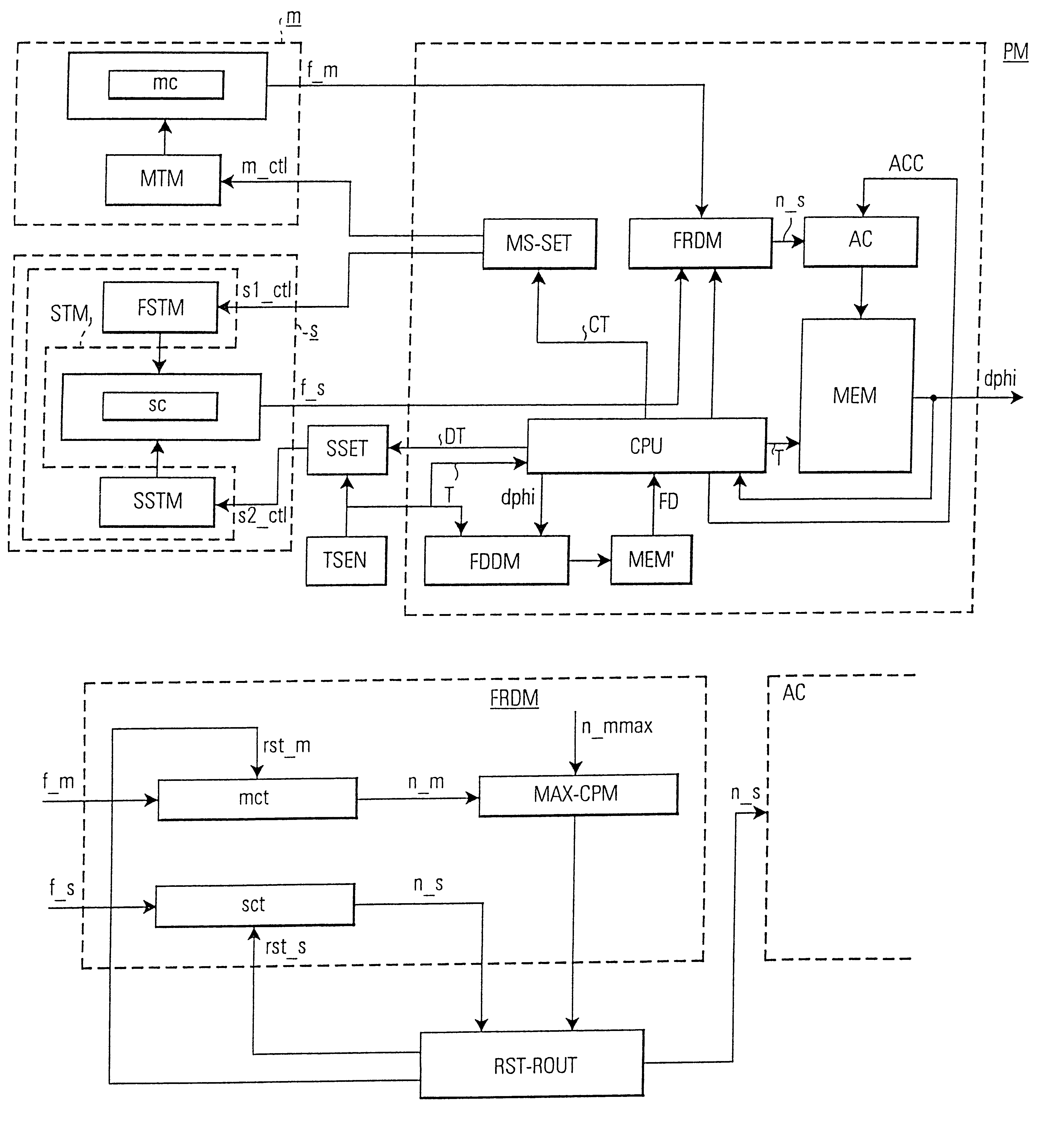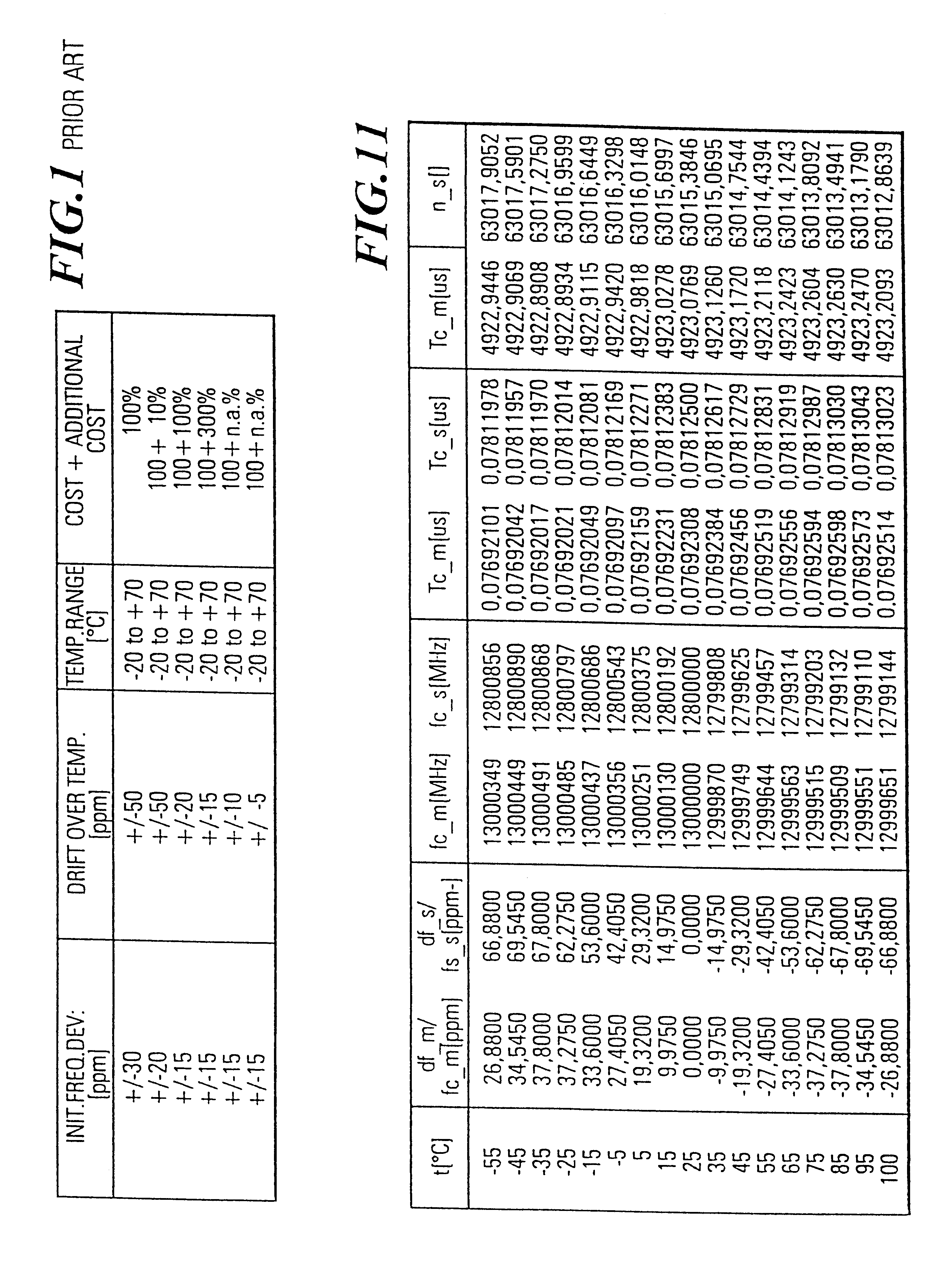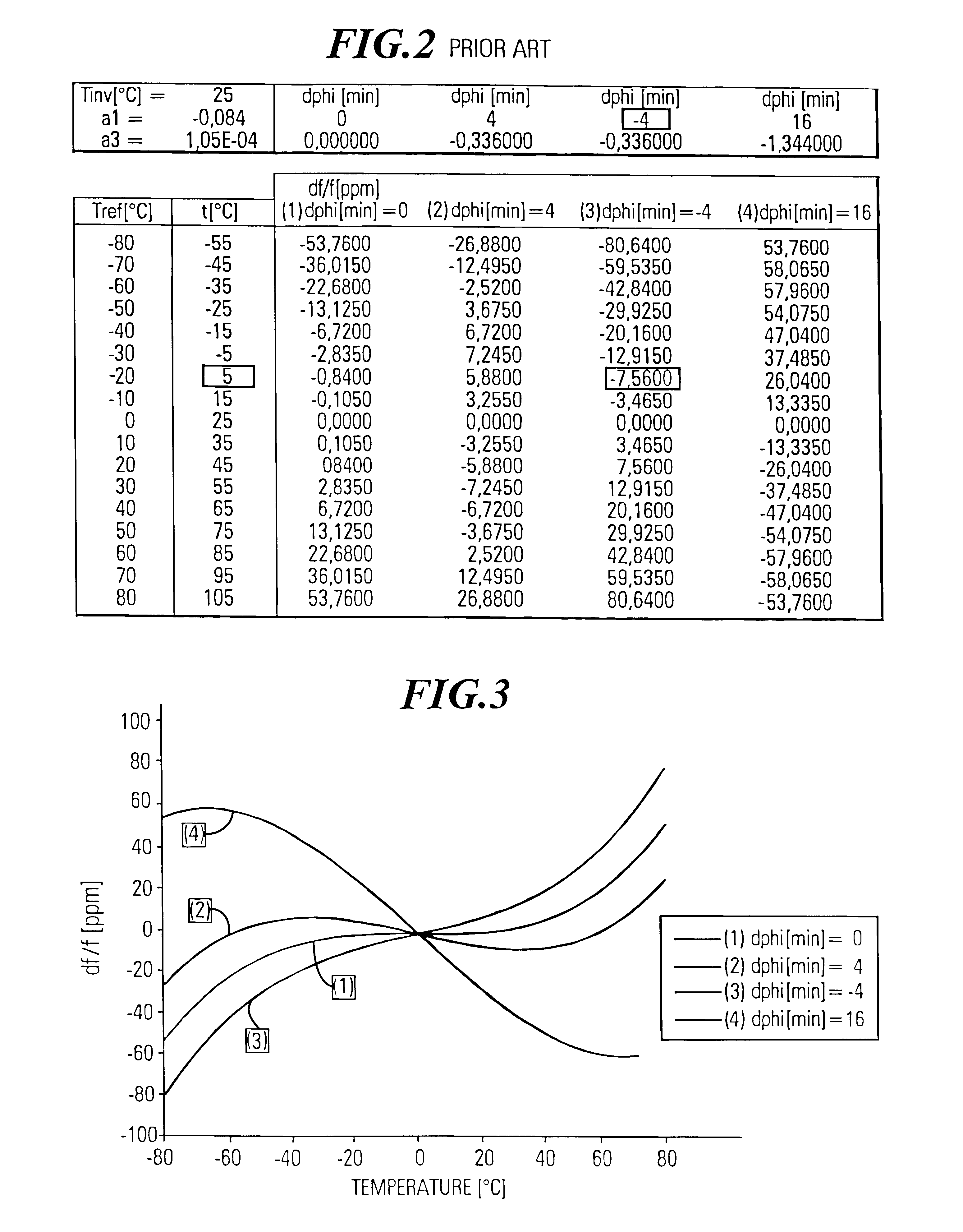Matched crystal temperature compensation device
a temperature compensation and crystal technology, applied in the direction of heat measurement, optical radiation measurement, instruments, etc., can solve the problems of small initial frequency deviation and small frequency drift over temperature only being obtained at very high cost, and the approach is certainly a very high cost-intensive one, and it is difficult or at least cost-intensive to have such a precise knowledge of the temperature characteristic of the crystal when it is purchased from the manufacturer
- Summary
- Abstract
- Description
- Claims
- Application Information
AI Technical Summary
Problems solved by technology
Method used
Image
Examples
first embodiment
FIG. 7 shows a device for temperature compensation via a determination of the cut-angle of crystals used in oscillators according to the invention. This embodiment is based on the above described principle, i.e. to realize a temperature dependent counter state (frequency ratio) of the slave counter which is needed for the estimation of the temperature characteristic of the crystals, an additional temperature coefficient is added to the slave crystal oscillator and the frequency ratio parameter n_s is precalculated for various combinations of cut-angles and temperatures as shown in FIG. 12.
The operation principle of the device in FIG. 7 is similar to the operation principle in FIG. 5. However, in FIG. 7 the slave crystal oscillator temperature characteristic has been detuned with respect to the temperature characteristic of the master crystal oscillator and additional units and memories have been added for determining the cut-angle dphi.
FIG. 8 shows an embodiment of the frequency rat...
second embodiment
As explained above in the first embodiment, an additional linear temperature coefficient is added to the temperature characteristic of the slave crystal (oscillator) in order to detune the frequency characteristics of the slave crystal oscillator. It will be appreciated that this is essentially equivalent to a situation where two different crystals with different cut-angles are used in the slave and master oscillator. That is, if no detuning is applied to the temperature characteristic, the frequency ratio parameters can be used in order to evaluate how identical (or different) the cut-angles of two crystals used in the master and slave oscillators are. The second embodiment of the invention is described with reference to FIGS. 15, 16a, 16b relates to this aspect and this mode of operation will hereinafter be called the "calibration-mode" of operation.
When no active additional linear term or additional detuning is applied to the second oscillator the principle dependency of the freq...
PUM
 Login to View More
Login to View More Abstract
Description
Claims
Application Information
 Login to View More
Login to View More - R&D
- Intellectual Property
- Life Sciences
- Materials
- Tech Scout
- Unparalleled Data Quality
- Higher Quality Content
- 60% Fewer Hallucinations
Browse by: Latest US Patents, China's latest patents, Technical Efficacy Thesaurus, Application Domain, Technology Topic, Popular Technical Reports.
© 2025 PatSnap. All rights reserved.Legal|Privacy policy|Modern Slavery Act Transparency Statement|Sitemap|About US| Contact US: help@patsnap.com



